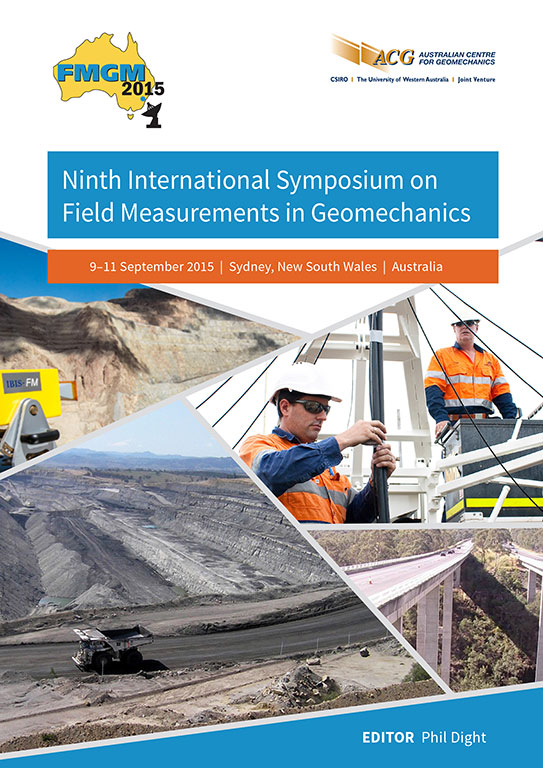The use of microseismic acquisition for vibration monitoring applications

|
Authors: Pinnock, I; Collins, DS; Toya, Y; Hosseini, Z Paper is not available for download Contact Us |
DOI https://doi.org/10.36487/ACG_rep/1508_40_Pinnock
Cite As:
Pinnock, I, Collins, DS, Toya, Y & Hosseini, Z 2015, 'The use of microseismic acquisition for vibration monitoring applications', in PM Dight (ed.), FMGM 2015: Proceedings of the Ninth Symposium on Field Measurements in Geomechanics, Australian Centre for Geomechanics, Perth, pp. 581-587, https://doi.org/10.36487/ACG_rep/1508_40_Pinnock
Abstract:
Microseismic monitoring is a critical tool that is widely used in the mining and petroleum industries to provide information about changing stress conditions of the rock mass. The equipment is also readily applicable to geotechnical applications, such as railway, structural and blast monitoring. In this paper, a comparison is made between two types of blast monitoring units. Blast and vibration monitoring units can seamlessly integrate with existing seismic monitoring systems or be deployed independently. The versatility of the systems is discussed with examples from three recent applications. The first application shows how, in the near-field, sensors have been used to help engineers optimise blast sequences and quantify the effect of blasting on nearby ground support. The second and third applications show the application of microseismic sensors, in publically sensitive locations, to monitor vibrations generated as a result of mining activity or industrial power generation units to ensure they do not exceed locally recommended guidelines. Vibration and blast monitoring systems are an easily deployable hardware and software package that can successfully record near-field or far-field vibrations, providing operators with useful information for each application.
References:
British Standard 1992, BS 6472:1992: Guide to Evaluation of Human Exposure to Vibration in Buildings (1 Hz to 80 Hz), BSI, London.
British Standard 2008, BS 6472-1:2008: Guide to Evaluation of Human Exposure to Vibration in Buildings – Part 1: Vibration Sources Other Than Blasting, BSI, London.
Collins, DS, Shumila, V, Butler, T, Hosseini, Z & Trifu, CI 2015, ‘Microseismic real time and advanced analysis in mines’, Proceedings of the 13th International Society of Rock Mechanics Congress, Canadian Institute of Mining, Metallurgy and Petroleum, Westmount, Quebec.
Collins, DS, Toya, Y, Hosseini, Z & Trifu, CI 2014, ‘Real time detection of rock fall events using a microseismic railway monitoring system’, Proceedings of the 6th Canadian GeoHazards Conference, Canadian Geotechnical Society, Richmond, BC, 6 p.
Environment Canada 2015, Environmental Code of Practice for Metal Mines: R 420 – Control of noise and vibration from blasting, Environment Canada, Gatineau, Quebec.
ESG Solutions n.d., Blast monitoring user guide, ESG Solutions, Kingston, Ontario.
United States Bureau of Mines 1983, ‘Report of Investigation 8507: Structure response and damage produced by ground vibration from surface mine blasting’, prepared by DE Siskind, MS Stagg, JW Kopp & CH Dowding, Washington DC.
© Copyright 2025, Australian Centre for Geomechanics (ACG), The University of Western Australia. All rights reserved.
View copyright/legal information
Please direct any queries or error reports to repository-acg@uwa.edu.au
View copyright/legal information
Please direct any queries or error reports to repository-acg@uwa.edu.au